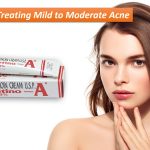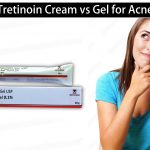Stretch marks- we all hate them, but over half of us have them. Stretch marks are indented streaks that often appear in body parts such as abdomen, breasts, hips, buttocks, and thighs. They become less noticeable over time. Stretch marks are gradually a common issue in pregnant women, especially during their last trimester. Stretch marks are not painful or harmful, but people feel distressed about the way they make their skin look. So get ready to get rid of stretch marks, because we have a new solution to make them disappear. This solution is known as Tretinoin gel, which promises you to deliver visible results. But don’t expect Tretinoin to work on old stretch marks that are months old and have faded to white or silver. The three stages of a woman’s life when she gets stretch marks that typically appear around the abdomen, buttocks, flanks, and the arms:
- During pregnancy
- During growth spurts
- While gaining weight
Important things about Retin-A (Tretinoin)
- Expected side effects- Side effects from Tretinoin are common and include redness, itching, and skin peeling. They are only temporary if you will discuss them with your dermatologist; you wouldn’t worry about them. Tretinoin will exfoliate the outermost layer of the surface of the skin, so the redness and dryness are to be expected. Apply moisturizer after using Tretinoin gel to get rid of this dryness.
- It takes a while to work- Many people stop using Tretinoin for stretch marks when they don’t see visible results. They may be giving up too early; it may take 20-24 weeks to see improvement. If side effects persist or worsen, it’s better to consult your dermatologist than just to quit.
- Don’t use more than the recommended amount- Applying too much Tretinoin or applying too often to get quick result can irritate the skin and make it worse. If you experience any side effect, your dermatologist may recommend skipping a few medications and then gradually raising the dose back up to a level that you can tolerate.
- Protect your skin from the sun during the treatment- If you exfoliate your epidermis, you are removing the pigment that shields your skin from long-term damage from the harmful rays of the sun. Use a strong sunscreen instead of moisturizer if you are going to expose the treated area to the sun.
- Tretinoin or Retin-A can interact with other drugs- Skin ointments or pills with ingredients that cause dryness or exfoliation, for example, salicylic acid, resorcinol or sulfur, shouldn’t be used with Retin-A except on a dermatologist’s advice.





